Choe Nam-Seon
최남선
Choe Nam-seon (April 26, 1890- October 10, 1957) was a prominent modern Korean historian, pioneering poet and publisher, and a leading member of the Korean independence movement.
Life
Choe Nam-seon was born in Seoul in the last days of the Joseon Dynasty. In 1904, he went to study in Japan, entering Waseda University in 1906. Upon his return to Korea, Choe founded Korea's first modern magazine, Sonyeon, in November 1908, through which he sought to bring modern knowledge about the world to Korea's youth. He coined the term Hangul for the Korean alphabet and promoted it as a literary medium through his magazines.
As the author of the first “new-style” poem, “Hae egeso Sonyeon ege” (해에게서 소년에게 The Ocean to the Youth), published in the inaugural issue of Sonyeon, Choe is widely credited with pioneering modern Korean poetry. Choe sought to create a new style of literary Korean that would be more accessible to ordinary people.
In 1919, Choe, together with Choe Rin, organized the March 1st Movement, a non-violent movement to regain Korean sovereignty and independence. For his drafting of the Korean Declaration of Independence, he was arrested by authorities and imprisoned until 1921. After his release, he continued to work as a publisher. In 1927, he published the entirety of Samgugyusahaeje (삼국유사해제 The Annotated Samgukyusa) in the 18th issue of Gyemyeong. The same year, lulled by the Governor-General of Korea with promises of a house and research funds, he joined the Governor-General's Korean History Compilation Committee. This caused former friends such as Yi Kwang-su, Han Yong-un, and Hong Myung-hee to cut ties with him.
In 1949, Syngman Rhee’s government arrested Choe for collaboration with the Japanese during the colonial period, but he was released when the trial was suspended. Choe remains a controversial figure in Korea today, being respected for his historical work and his efforts to create the modern Korean language while being condemned for his wartime statements supporting Japan.[1]
Writing
Choe Nam-seon devoted his entire life to compiling, revising, and annotating classical Korean works, notably history but also classics of Korean literature that until then had been mostly read by the elite. Through the work of the Chinese nationalist writer Liang Qichao, Choe learned of the Western theories of Social Darwinism and the idea that history was nothing more than an endless struggle between various people to dominate each other with only the fittest surviving. Choe believed that this competition would only end with Korea ruling the world. In a 1906 essay he wrote: "How long will it take us to accomplish the goal of flying our sacred national flag above the world and having people of the five continents kneeling down before it? Exert yourselves, our youth!"[2]
Choe's magazine Sonyeon was intended to popularize Western ideas about science and technology though a more readable Korean that would modernize the Korean nation for Social Darwinist competition for world domination. Japan's annexation of Korea in 1910 accelerated the independence movement. Influenced by Social Darwinist theories, Choe urged in numerous articles that the Koreans would have to modernize in order to be strong to survive. In a 1917 article in Hwangseongsinmun (황성신문, Capital Gazette), Choe wrote: "The modern age is the age of power in which the powerful survive while the weak perish. This competition continues until death. But why? Because the struggle to be a victor and a survivor never ends. But how? It is a competition of intelligence, physical fitness, material power, economic power, the power of idea and confidence, and of organizational power. Everywhere this competition is underway daily." [2] Since Korea was annexed by Japan in 1910, for Choe the best way of preserving Korea was giving the Koreans a glorious history that would ensure that the Koreans at least had the necessary mentality to survive in a harsh world.
The South Korean historian Hwang Kyung Moon wrote that there is a striking contrast between Choe, the passionate patriot who penned the Declaration of Independence in 1919 vs. Choe, the collaborator of 1943 urging Korean university students to enlist in the Imperial Japanese Army and die for the Emperor of Japan. Kyung suggested that the change in Choe was caused by the fact that Japan had occupied Korea in 1904 during the Russian-Japanese War and by the early 1940s, the "permanence" of Japanese rule was assumed by most Koreans as every attempt to win independence had always ended in failure. Given this situation, Koreans like Choe had lost their youthful idealism and abandoned their dreams of freedom, simply hoping to reach an accommodation with the Japanese that might at least preserve some sort of Korean cultural identity.[1]
References
[1] Hwang, Kyung Moon. A History of Korea, London: Palgrave, 2010 page 192.
[2] Allen, Chizuko. "Northeast Asia Centered Around Korea: Ch'oe Namsŏn's View of History" pages 787–807 from The Journal of Asian Studies, Volume 48, Issue 4, November 1990 page 789.


